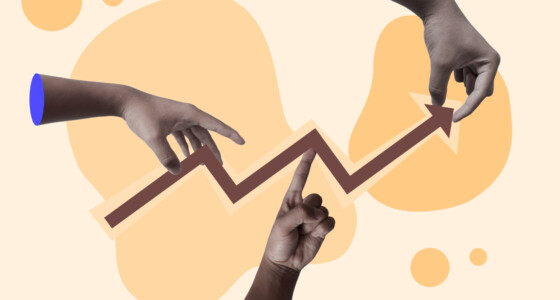

Day trading and swing trading are major trading approaches. The first implies making small trades within a short period, while the latter considers medium-term positions. There is no best approach. The idea is to find the unique points of each method and choose the one that suits your lifestyle and money management strategy. Read on to discover the techniques further.
Day trading vs. swing trading
Although day trading and swing trading imply short-term trades, these are opposite approaches. Determine their unique features to choose the one that suits you the most.
Day trading
Interestingly, according to the US Securities and Exchange Commission (SEC), most day traders suffer dramatic financial losses in the first months, and many can’t reach a positive winning rate. It’s true if you don’t have enough experience. Although day trading is a popular strategy, only highly skilled traders can succeed using it.
The idea of day trading is to open and close numerous small trades within one trading day and cover some trades’ losses with returns from others. This method requires fast reactions, well-structured strategies, and total emotional control. To trade within a day, you need to know how to implement fundamental analysis. Mainly, day traders use fundamental factors that increase market volatility within a short period.
Day trading is considered a real job, as it requires traders to monitor price movements within market working hours, leaving no time for other duties.
The key advantage of day trading is having control over trades. As positions are closed within one trading day, a trader knows the outcome and can set other positions in accordance with their results.
Swing trading
The name of this method explains its idea. A trader looks for swings in price movements. Therefore, they use chart patterns and technical indicators that can predict a change in the price direction. Swing traders mostly use strong trends that can help investors define price reversals.
This method doesn’t require much of a trader’s time, as a position remains open from several days to weeks. However, this approach requires traders to set stop-loss and take-profit orders with no exceptions. As traders don’t check the price fluctuations constantly, they need to be sure they won’t lose all their funds if the market opposes their forecast. Also, unlike day traders, swing traders have to keep rollover fees in mind; these are incurred by holding trades overnight and are either added or erased from the account.
Swing trading suits traders who don’t have much time to monitor the market. These traders prefer investing significant funds and waiting for the result rather than matching rapidly changing market conditions.
Key differences between swing trading vs day trading
When you’re choosing between two options, it’s important to know what makes them different, so you can compare these aspects and settle for the more suitable alternative. Day trading and swing trading are both amazing short-term trading options, yet they have a few differences.
It’s important to know that both of these trading methods have their pros and cons. None is better than the other, but each is good in its own way. People who trade usually select one based on their lifestyle, preferences, and skills.
Day trading involves making several trades per day, while with swing trading, you make multiple trades each week. In swing trading, you use momentum indicators, and trends, whereas day trading takes advantage of short-term buy and sell signals.
Swing trading has less, yet more substantial losses or gains, and day trading has more gains or losses, but smaller ones. On top of that, day trading positions can last from hours to days, and swing trading positions can last from days to weeks.
Usually, swing trading is better for people who want to spend less time trading. They let you make trades in smaller numbers and set positions, and you may even be able to make a better profit. But if you love trading and you want to be all in, day trading is the better alternative.
Advantages of swing trading
Swing trading is great because it allows you to take an active role in trading, yet without the need to be in front of your computer at all times to perform trades. People who are busier or just not willing to spend their whole time trading will have a much better time if they settle for swing trading. Also, day trading may require more advanced technology, but this is not the case for swing trading. This makes the latter more accessible.
In this type of trading, people can make smaller upfront investments. They can use a simple computer, as well as conventional trading tools. Also, people who swing trade are able to set stop-losses, therefore eliminating some of the risks. If you are aware of your positions early on, you can enjoy a more automated process.
In swing trading, when you hold a position for longer, there is the possibility for a larger price movement to happen. Therefore, the likelihood of getting better returns increases.

Which is right for you?
Both day trading and swing trading can be beneficial for different people. If you want to invest in the short-term, then both can be a suitable choice. But you must know which one to settle for depending on what you want to achieve through trading.
If you don’t want to deal with more attention and risk and prefer something slower, then you can go for swing trading. However, if the risk is something you find exciting and you don’t mind giving the environment more attention, day trading might be the better option.
Scalping vs. day trading vs. swing trading
Scalping is mostly considered a subtype of day trading, as scalpers execute trades within one trading day. The key difference between scalping and day trading is that scalpers open positions for a few seconds up to a maximum of five minutes, while day traders keep positions open for hours.
Being a scalper is even more complicated than being a day trader, as you need to open many trades to cover the expenses and potential losses of other trades. You should remember that a broker charges every trade you open. Therefore, you will deal with hundreds of fees if you open hundreds of positions within a day.
A crucial requirement for a scalper is to determine a highly liquid market so the price reaches the predetermined level within the short term.
Day trading vs. swing trading vs. investing
Although day trading and swing trading can also be called investing approaches, here, investing stands for a long-term strategy.
As mentioned above, day trading is done within several hours, while swing trading takes several days to several weeks. Investing is usually done for a period from several weeks to years. An investor buys an asset and holds it for an extended period to sell later when its value surges.
When you compare day trading vs. swing trading vs. long-term investing, you should consider your goals, the amount of funds you are ready to spend without risking becoming bankrupt, and what assets you want to deal with.
- All three approaches can be applied to all financial markets. However, unlike day and swing trading, investing is mainly done on stock or cryptocurrency markets. This is because Forex is less volatile than stocks and cryptos. In most cases, it’s a non-profitable strategy to buy a currency and wait for it to skyrocket against another one.
- Investing may require even less funds than day or swing trading. However, to receive considerable returns, you need to purchase a lot.
- Day trading is considered a full-time job. Swing trading is a part-time activity that allows traders to open several trades within the middle term. Investing is mostly used for retirement savings and is considered a big investment in a limited set of assets.
Day trading vs. swing trading: which is better
If you plan to open numerous trades within a day and have enough experience to deal with losses and exceed losses with successful trades, you should choose day trading. If you prefer to take advantage of a trending market and have enough funds to hold the trade over days or weeks, swing trading is for you.









